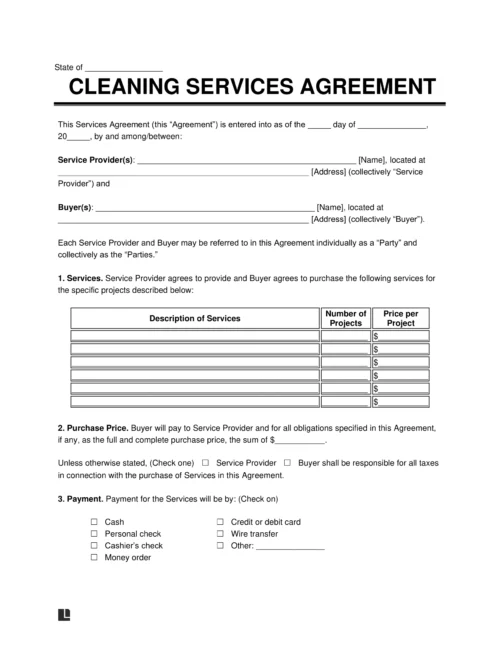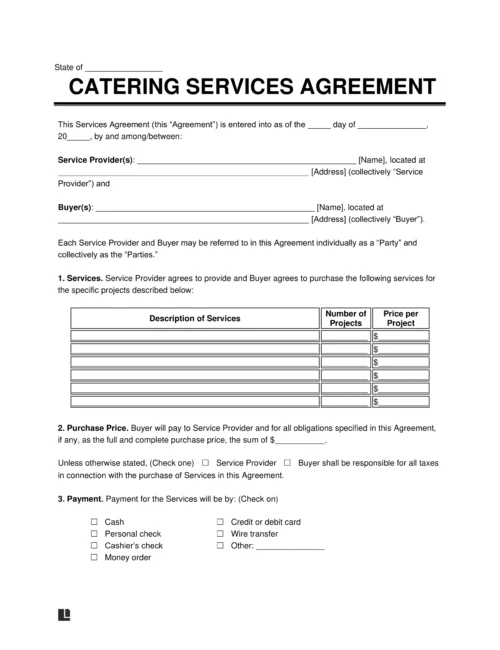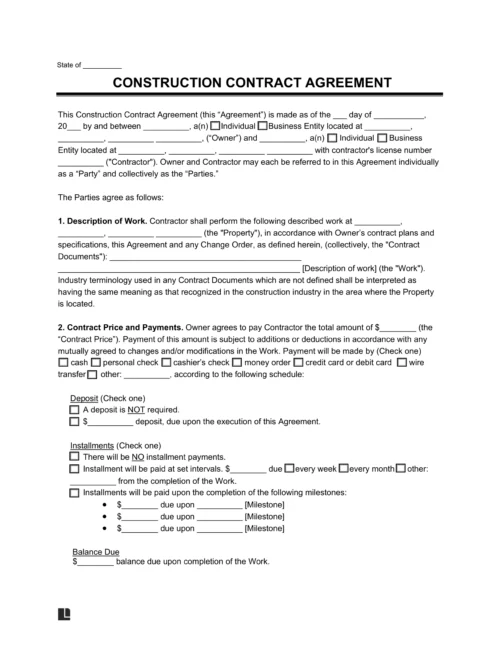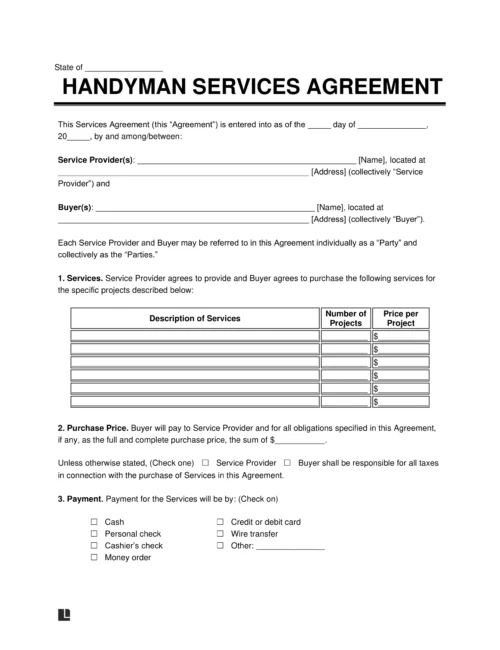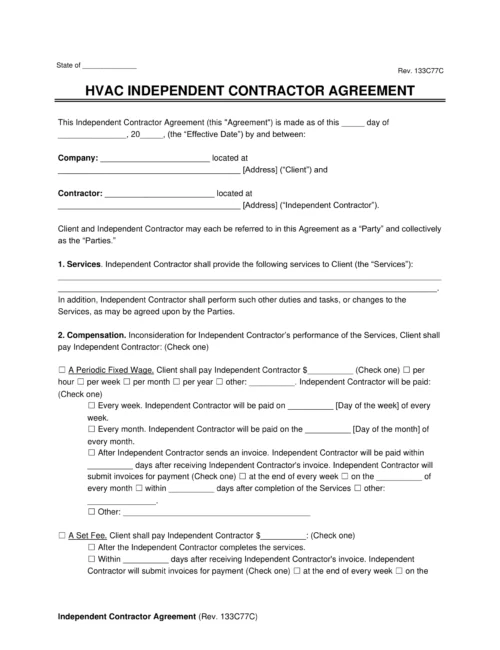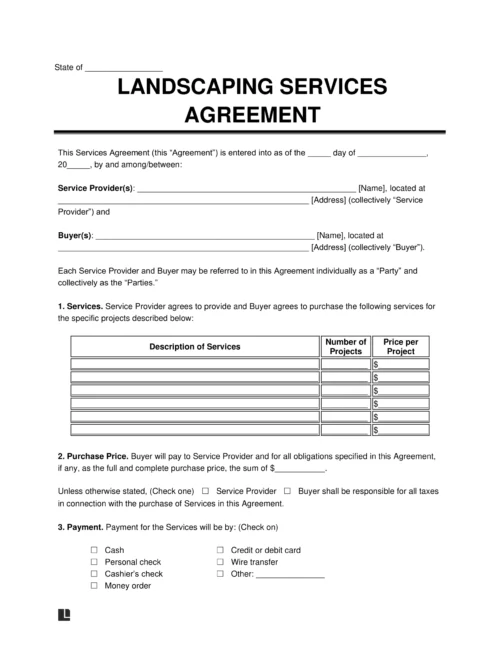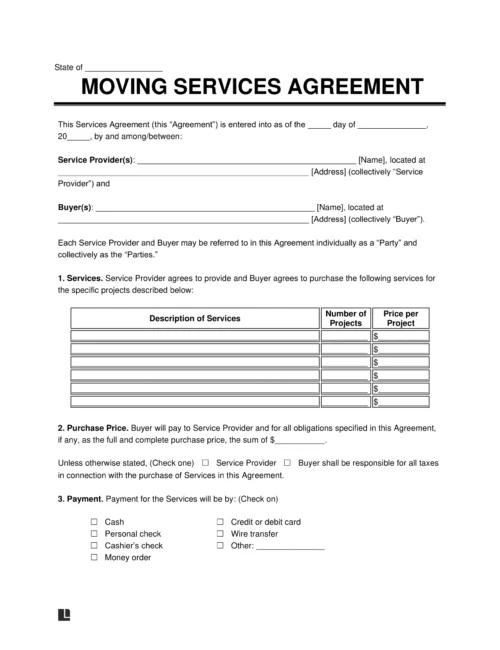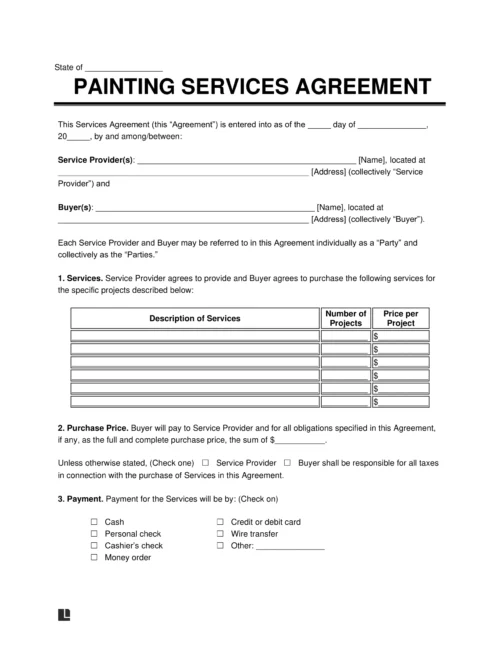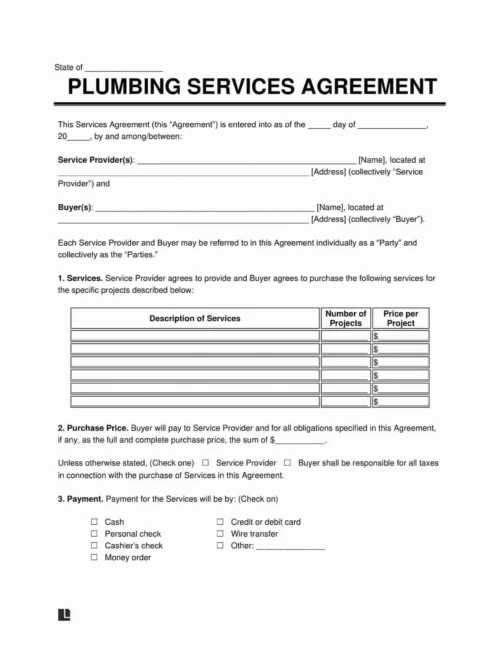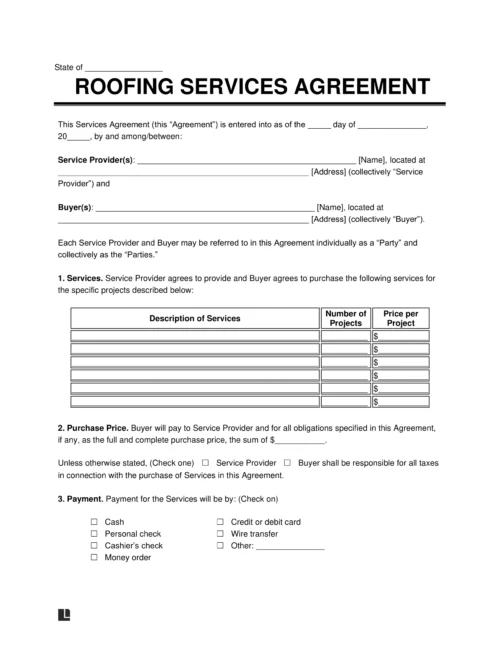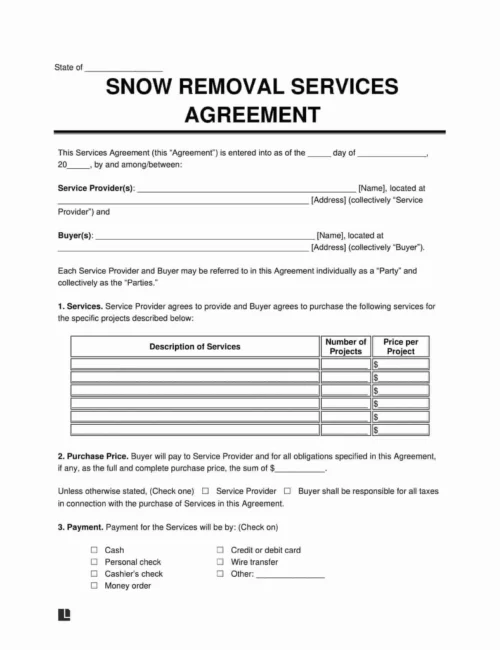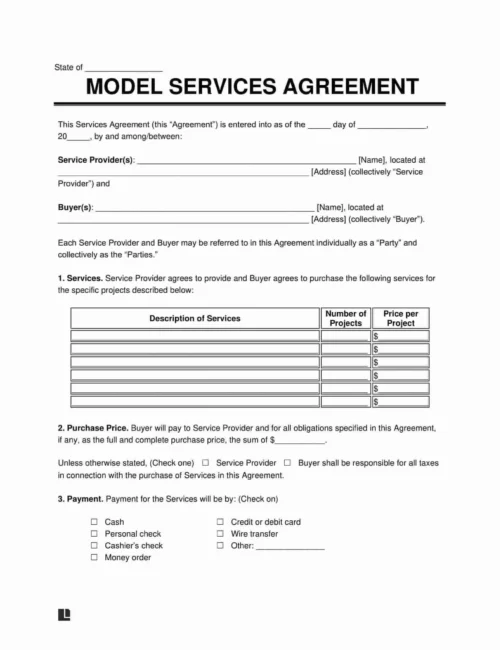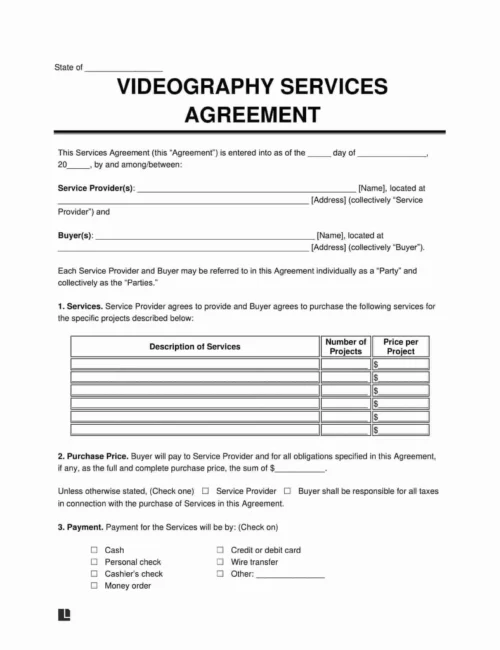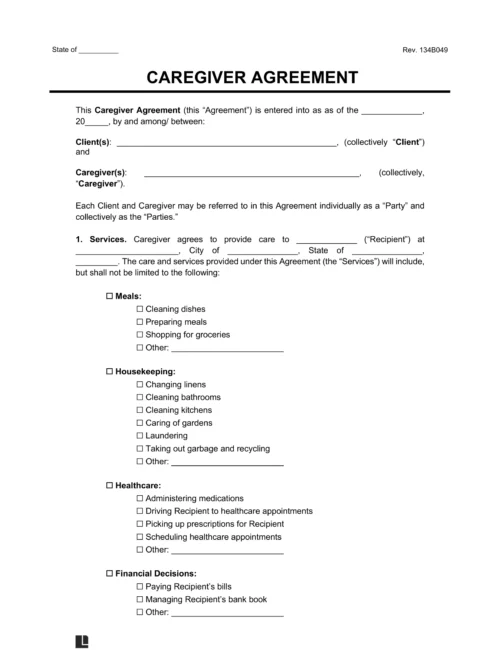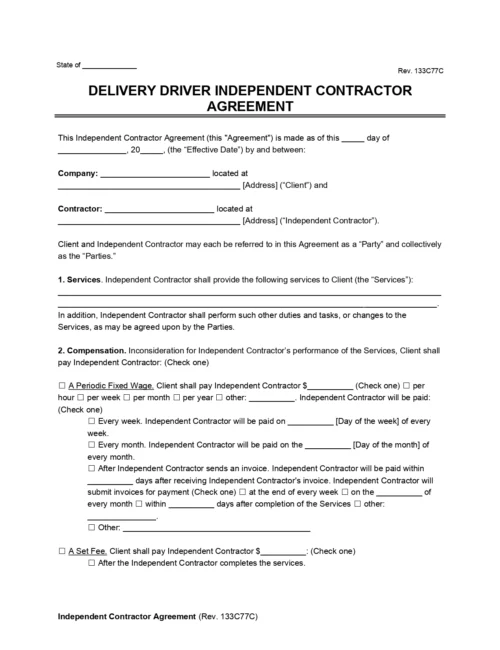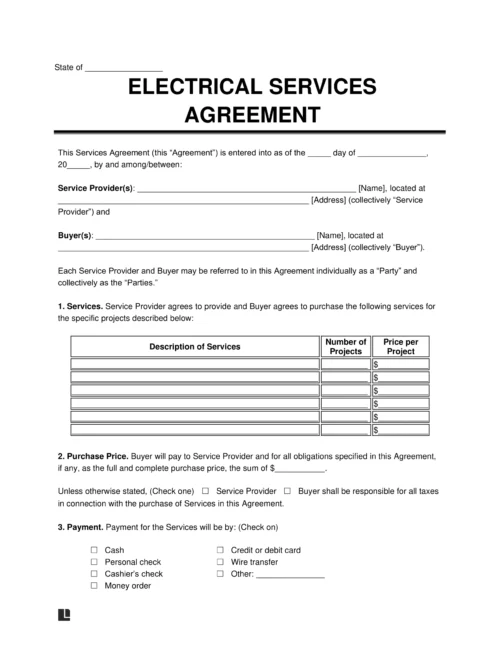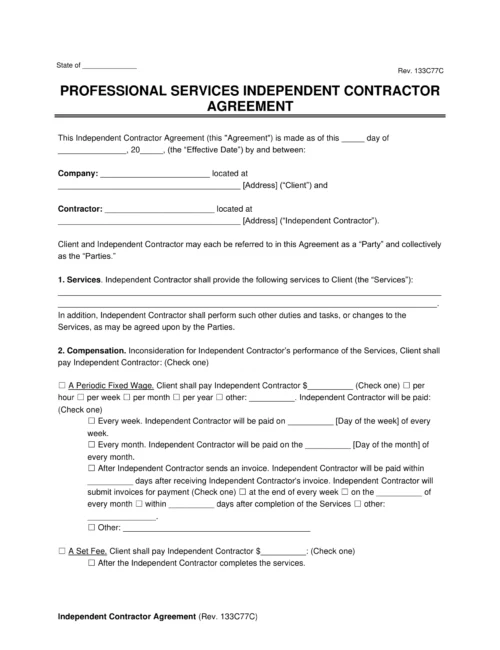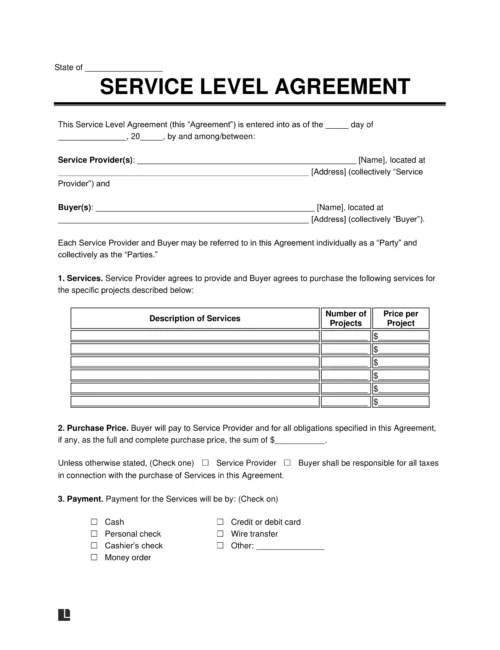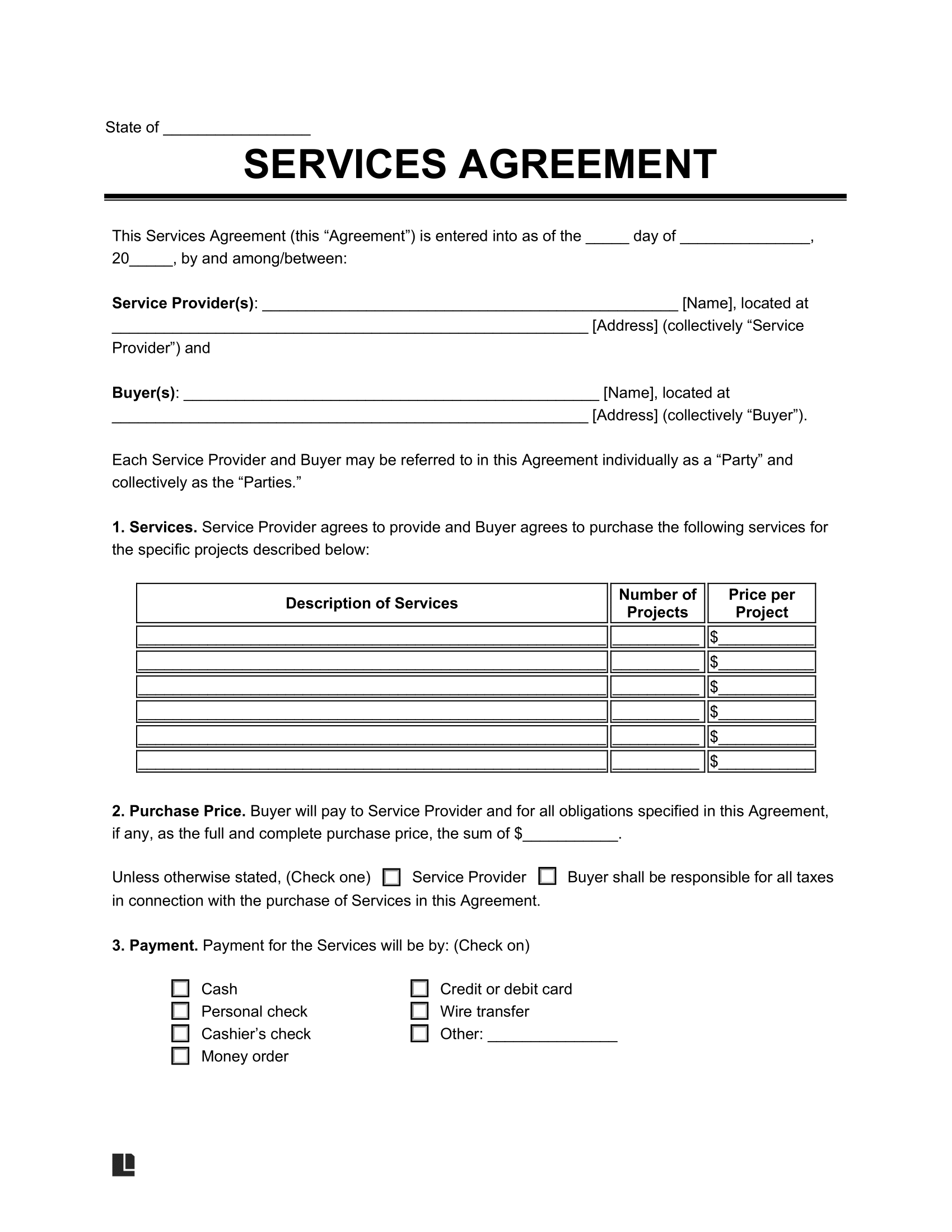What Is a Service Agreement?
A service agreement is a legal contract between a service provider and a client. It explains what work will be done, how much it will cost, when it will be finished, and any other essential details. Unlike a sales or purchase agreement covering buying and selling physical items, a service agreement focuses on the work or task being completed. It helps both sides understand what to expect and prevents confusion later on.
You can use a service contract agreement template for both one-time projects (like renovations) and ongoing work (like cleaning or landscaping). This type of contract helps avoid misunderstandings, keeps payments on track, and makes sure both sides know what to expect.
Use a written agreement whenever you offer or receive services. Verbal contracts are difficult to enforce and prone to disputes.
Types of Service Agreements
There is no one-size-fits-all service contract. Use the categories below to find the right contract template for services based on industry or type of work.
Home & Personal Services
Agreements for household maintenance, improvement, and personal assistance:
Creative & Freelance
Creative professionals and freelancers can use these to set project expectations:
Caregiving & Child-Related
Formalize arrangements involving care and supervision:
Professional & Technical
For skilled or licensed professionals offering consulting or trade services:
How to Write a Contract for Services
Take the guesswork out of service jobs by using a clear, written agreement. Our free service contract template helps you outline the key details, so both sides know exactly what to expect. Here’s how to write one:
- Start with the Parties and Date: Name the client and service provider, and include the agreement’s start date.
- Define the Services: Clearly describe what will (and will not) be done. Be specific about tasks, deliverables, or phases of work.
- Set Payment Details: Include the total cost, hourly or per-project rate, payment schedule, and any deposits or late fees.
- Add Timeline or Duration: State whether the agreement ends on a specific date, after task completion, or will continue indefinitely.
- Include Termination Clauses: Explain how either party can terminate the agreement, typically with written notice. Include any fees or penalties for early termination.
- Handle Confidentiality and Intellectual Property (IP): Address ownership of work product and any confidential information shared. Consider using a non-disclosure agreement to protect sensitive information.
- Choose Dispute Resolution and Governing Law: Specify the state’s laws that govern the contract and how disputes will be handled (e.g., mediation or arbitration).
- Sign the Agreement: Both parties must sign for the contract to be valid. Optional: include witness or notary signatures.
Sample Service Agreement
Below, you can see what a service agreement sample looks like. When you’re ready, you can customize this template to meet your needs and then download it in PDF or Word format.
How to Revise a Service Agreement
Need to update an existing contract? Here’s how to revise it:
- Review the current agreement thoroughly.
- Identify outdated or inaccurate terms (e.g., new deadlines, revised scope).
- Create a new version with the updates clearly marked, or use an addendum. Retitle the agreement as an amendment and reference the original contract.
- Have both parties review and sign the revised version.
- Send a signed copy to all involved for records.
If major changes are required, it’s often best to terminate the original agreement with a notice of contract termination and create a new one.



